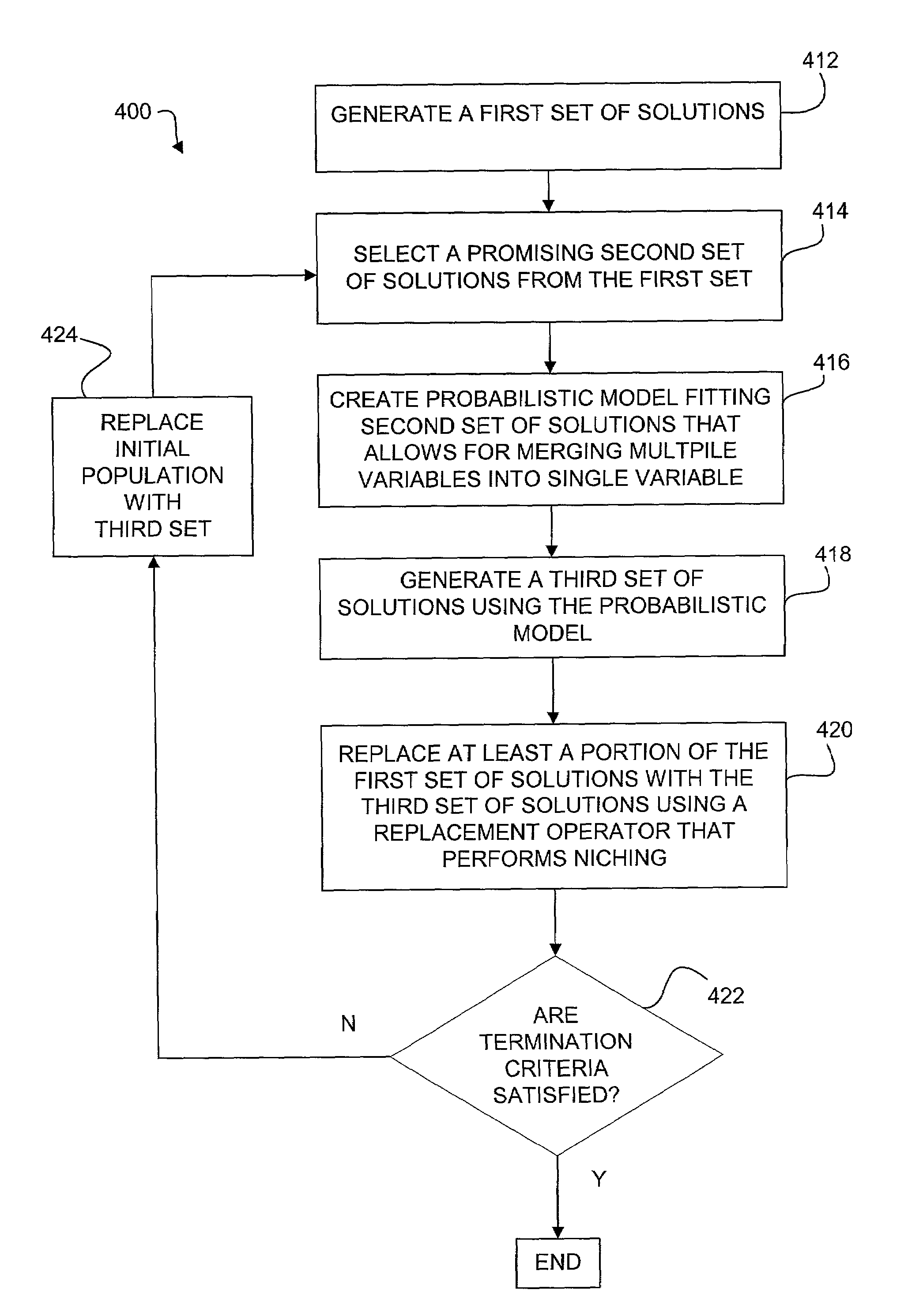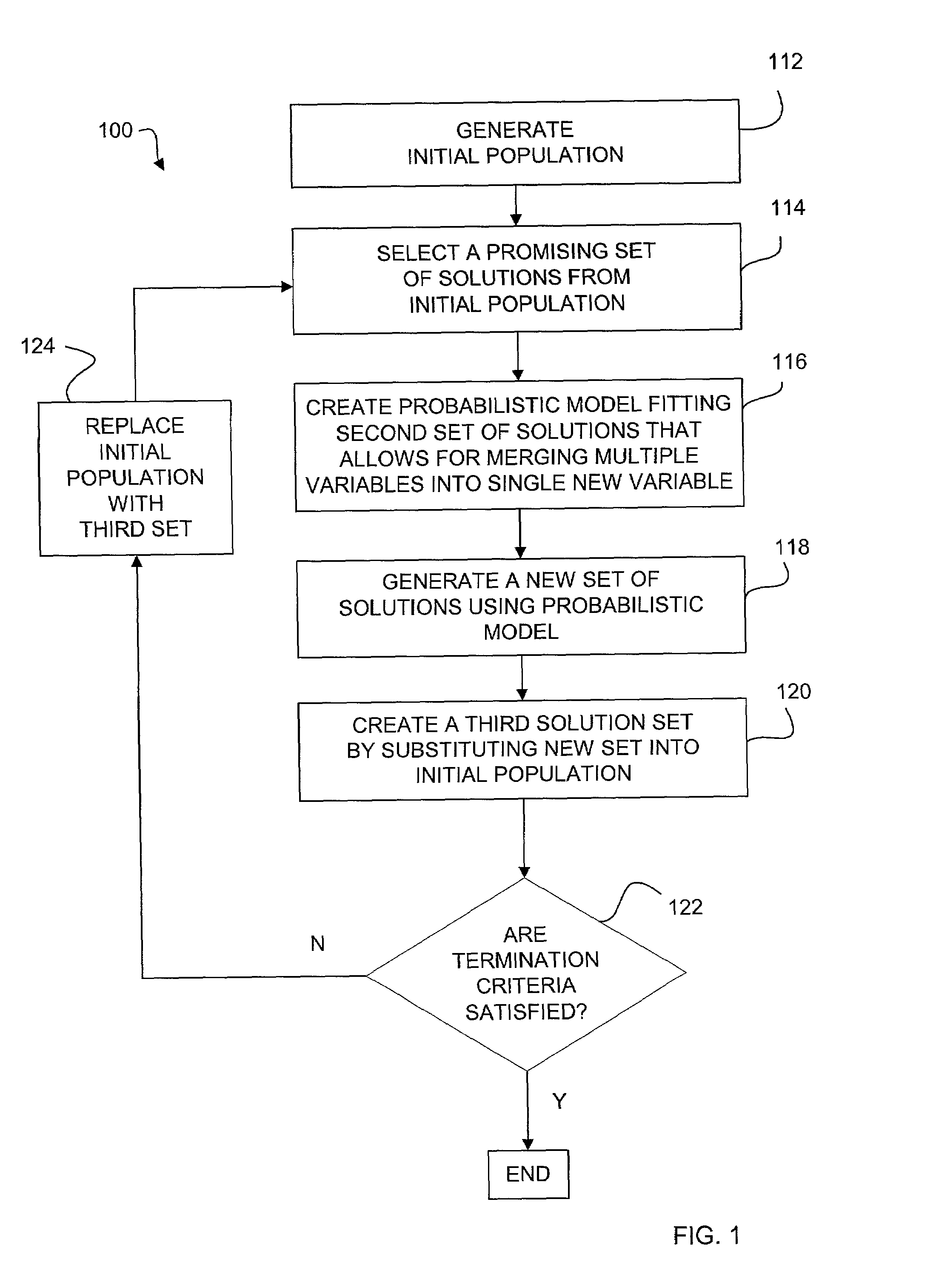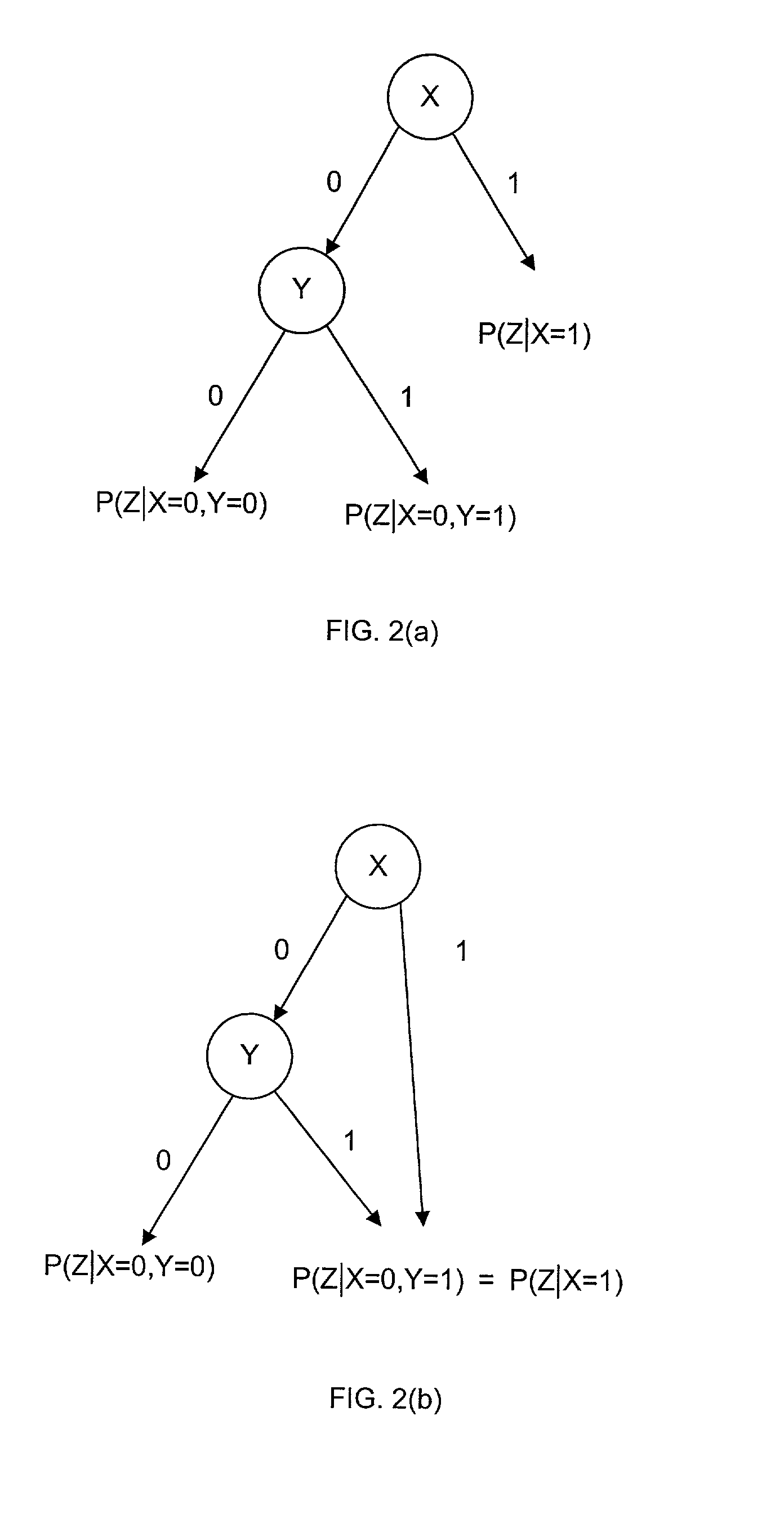Method for optimizing a solution set
a solution set and optimization method technology, applied in the field of optimization methods, can solve the problems of large potential solution sets of real-world optimization problems, inability to random search or enumerate the entire search space of such sets, and limited use of known optimization methods, etc., to achieve efficient representation
- Summary
- Abstract
- Description
- Claims
- Application Information
AI Technical Summary
Benefits of technology
Problems solved by technology
Method used
Image
Examples
embodiment 100
[0034]The embodiment 100 comprises generating a first set of solutions (block 112). The solution set may comprise, by way of example, a plurality of members, with each member being a binary character string of fixed or variable length. It will be appreciated that the individual members may likewise comprise any of a number of formats, with examples including, but not limited to, k-ary strings of fixed / variable length, integer vectors of fixed / variable length, real vectors of fixed / variable length, permutations, trees / networks / graphs, random keys, program codes, text, images, production rules, logical expressions, floating point code, alphanumeric code, combinations of any of these elements, and the like. Further, virtually any imaginable type of individual member may be converted to a format such as a fixed / variable length n-ary string for use with an invention embodiment.
[0035]The first set of solutions may be generated, by way of example, randomly. By way of additional examples, t...
embodiment 110
[0036]The embodiment 110 further comprises a step of using a selection operator to select preferred members from the first solution set to create a second solution set (block 114). Any suitable selection operator may be used, with examples comprising tournament selection, truncation selection, fitness proportionate selection, and Boltzmann selection. The selection operator may comprise, by way of particular example, a fitness function that measures the fitness of each of the members of the first set and selects only members having a high fitness to create the second set. By way of more particular example, each of the members of the first solution set may be evaluated according to the solved problem, with each candidate solution assigned a value (e.g., a fitness value) or a set of values related to the performance of the candidate solution with respect to the objective (or objectives). The selection operator uses the assigned values to create a new population of candidate solutions c...
embodiment 300
[0050]It will also be understood that embodiments of the invention may comprise steps of performing niching that are separate from the steps of selection. Indeed, performing niching steps in a different sequence than has been discussed with reference to the embodiment100 may be advantageous in some circumstances, as will be discussed herein, for example, with reference to the invention embodiment 300.
[0051]Referring once again to FIG. 1, regardless of the selection operator used, once the second solution set has been created, the embodiment 100 further comprises a step of fitting the second set of solutions with a probabilistic model (block 116). As will be understood by those skilled in the art, a probabilistic model is one that, for example, assigns a probability distribution to the members of the second set, and thereby is able to express a joint distribution between single variables. In order to be effective for solving complex hierarchical problems having multi-level dependenci...
PUM
 Login to View More
Login to View More Abstract
Description
Claims
Application Information
 Login to View More
Login to View More - R&D
- Intellectual Property
- Life Sciences
- Materials
- Tech Scout
- Unparalleled Data Quality
- Higher Quality Content
- 60% Fewer Hallucinations
Browse by: Latest US Patents, China's latest patents, Technical Efficacy Thesaurus, Application Domain, Technology Topic, Popular Technical Reports.
© 2025 PatSnap. All rights reserved.Legal|Privacy policy|Modern Slavery Act Transparency Statement|Sitemap|About US| Contact US: help@patsnap.com



